10 Expert’s Guide To The Pros and Cons of a HVLP Sprayer
Spray Finishing? Why Should You Buy HVLP?
This innovative process for spraying paint is more popular today than ever before thanks to continuing advancements in technology and how the different types of airless spray delivery methods have been improved over time on job sites around the world. Since the technology was introduced over a century ago, professional contractors have preferred airless paint spraying for many reasons: Airless spraying increases speed. Airless spraying is faster, so more jobs can be completed in less time, using less labor – plus, it’s great for jobs with a short weather window.
Airless spraying improves overall finish quality. Airless sprayers produce an even coat of paint (referred to as the mil build) on all types of surfaces, leaving a high-quality finish. Airless spraying is also very versatile. Airless sprayers can be used for a wide range of coatings for both interior and exterior jobs and can easily be transported around job sites.
Another fluid spray method is High-Volume, Low-Pressure – or HVLP. These systems also utilize compressed air, but in a different way than standard air spray systems. With an HVLP sprayer, a turbine delivers a large volume of air at a much lower pressure to atomize and spray the fluid. In fact, the unit must be 10 PSI or less at the air cap to qualify as HVLP. These systems are designed for smaller fine finish jobs because they provide the least amount of overspray and unmatched precision forthe highest quality professional finish.
Our official website often receive questions about finishing and spraying. One very interesting question that keeps coming across our desk is about K brand HLVP paint spray gun with trolley and what they are best suited for. Since many of our readers are woodworkers, one of the questions we are frequently asked is “What else can I spray with my HVLP turbine sprayer?”
K brand HLVP paint spray gun with trolley has had a strong presence and connection to woodworking from the serious craftsman to the DIYer to diverse professional woodworking applications. What many of our readers may not be aware of is that our HVLP paint spray guns are used to spray many different types of fluids and coatings.
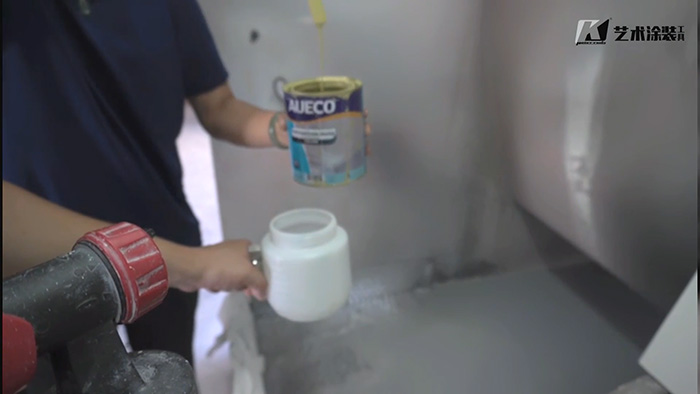
Applicable coatings of the spray gun: internal and external wall emulsion paint / art paint (velvet, metal paint, sand velvet type),spray paint, water-soluble lacquer, oil soluble lacquer ... etc. Suitable for indoor and outdoor cooperation.
Home owners, DIY experts, and commercial painting professionals all seem to feel the same when it comes to HVLP Sprayers. They want one.
Comparing the different paint sprayers on the market can be a full-time job for the amateurs and pros alike. For house painting, interior and exterior painting, furniture painting, decoration painting – and a variety of other home improvement projects and commercial applications – an HVLP Sprayer seems ideal.
Opposite to the conventional sprayers giving us a broad spray, we have HVLP sprayers. The HVLP acronym stands for High Volume – Low Pressure. This means that the spray coming from the nozzle of this device will be narrower and easier to control. It will also make this sort of sprayers ideal for smaller objects and complex surfaces.
With the help of HVLP sprayer, you will get maximum accuracy and control for all the intricate work that needs to be done. Also, with the lower pressure, you get more volume. This translates into more paint ending up on the surface you are trying to cover. And that is great news.
HVLP sprayers are immensely popular among the “do it yourself” people as they are easy to use and applicable to almost any kind of housework. The precision you get with using an HVLP device allows you to do a professional level of work at your home. They are easy to use, so even if you are not an experienced painter – you will get satisfying results in no time.
As a professional painter or a DIY expert, you already know the value of having the right equipment to achieve the best results. Most importantly, you know what mistakes to avoid. And you also know exactly what equipment to look out for. From detailed house painting tasks, commercial jobs, furniture, cabinets, stencils, and variable surfaces, upgrading to an HVLP Paint Sprayer can be a game changer.
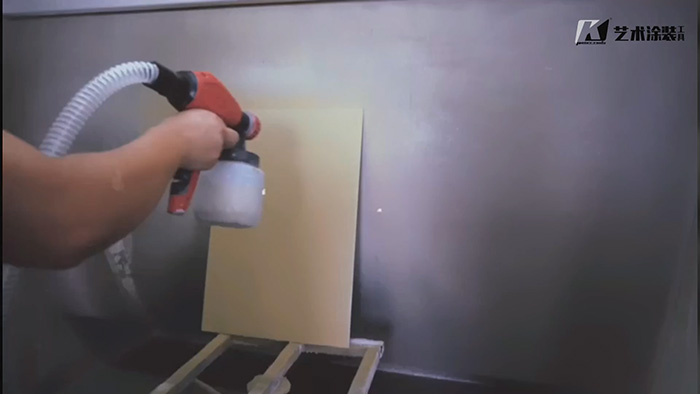
1.Only one Cons of an HVLP Paint Sprayer
Beyond the list of reasons why an HVLP is an amazing tool, there are cons. Due to the Lower Pressure you will need to factor in more application time.
For larger surfaces, an HVLP Paint Sprayer may not be your best bet at all. Less bounce back and overspray also means less prep time. Professionals and DIY homeowners alike can be confident in the range of control they will receive from an HVLP Paint Sprayer.
2. Reduced Overspray Compared To Other Products
By reducing overspray and bounce back an HVLP type Paint Sprayer puts paint exactly where you want it: on the project you are focused on. All of this means, of course, you are going to use less paint than usual when getting your project done.
3. Reduced Materials Consumption
Transfer Efficiency, which we will be covering further down, calculates the effort and accuracy required when using a paint sprayer. Due to the technology, an HVLP Paint Sprayer is by far the leader in Transfer Efficiency.
What this means for commercial paint experts and all-star DIY homeowners is simple: You’ll spend less money on paint than you would normally. Your new HVLP will use less material because more will be covering the intended surface.
4.Decreased Waste
With all that paint landing exactly where you point your HVLP you will notice a huge decrease in waste. You will also notice a huge decrease in wasted time. When you don’t have to spend hours on cleanup, using your paint sprayer is a breeze.
5.Reduced Pollution with an HVLP Sprayer
Tired of inhaling half of the paint you intended for your projects? Sick of messy cleanup? Your HVLP will be more Eco-friendly than conventional sprayers due to the decrease in wasted paint. Less spillage and waste means a lower environmental impact.
6.Easy to Control
Often used for detailed surfaces, an HVLP offers unmatched control. With stellar application accuracy, an HVLP is ideal when painting smaller projects that require extra care.
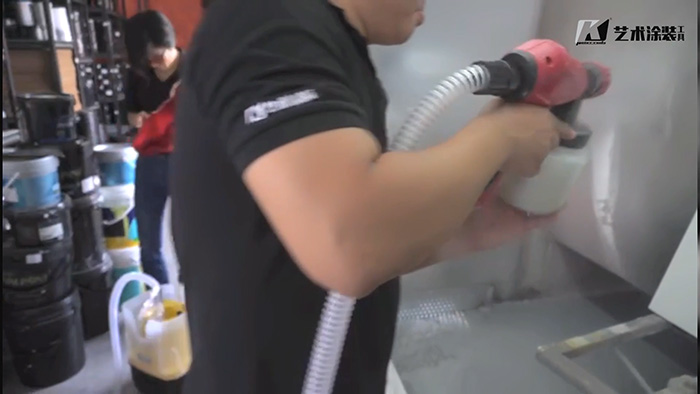
7.Lower Cost
HVLP Sprayer is incredibly precise it is unmatched in terms of Transfer Efficiency. By weighing your HVLP before and after any paint application process you can easily see the increased Transfer Efficiency this equipment offers over other types of paint sprayers.
You will work less, for better results and lower costs, when using an HVLP Paint Sprayer for your commercial projects and DIY tasks. Not only are HVLP type Paint Sprayers easy to use. They are easy to store and carry.
8.Portable and Compact
Unlike some commercial painting equipment, an HVLP is portable and compact, as well as being easy to use. Portable and compact means set-up time will be a snap when using your HVLP Paint Sprayer.
Their small size in comparison to other commercial equipment makes an HVLP easy to clean and maintain. Taking a moment to clean liquids from your spray cup after each project will go a long way to preserving your equipment for the next use.
K brand HLVP paint spray gun with trolley is three sections of adjustable design of telescopic trolley, both sides have a silent straight wheel assistance, long use is still smooth. A trolley is convenient and quick to go.
Dissasembly comes easy, as does maintaining the interior parts. Every manufacturer provides clear and simple directions on reassembly as well. Commercial painting professionals and DIY homeowners alike can be comfortable in using an HVLP with great precision. Their small size and portability make using this type of sprayer for detail projects all the easier.
9.Ideal for Special Projects
For certain types of windows, cabinets, doors, and fences this family of paint sprayers offers the best option for these special projects. From a single piece of wood to stenciling projects, bikes, tables, and other furniture, HVLP users report great results.
Since this type of paint sprayer is adaptable to a wide range of paint and stain products, the HVLP can work with acrylics, alkyd paints, oil based stains, interior wood stains, and lacquers.
10. You’ll Fall in Love With Your HVLP
The worst part about an HVLP Sprayer? You’re going to love it. You're going to want to paint everything with it! If you don’t hold yourself back you may find you want to paint everything inside and outside your home.
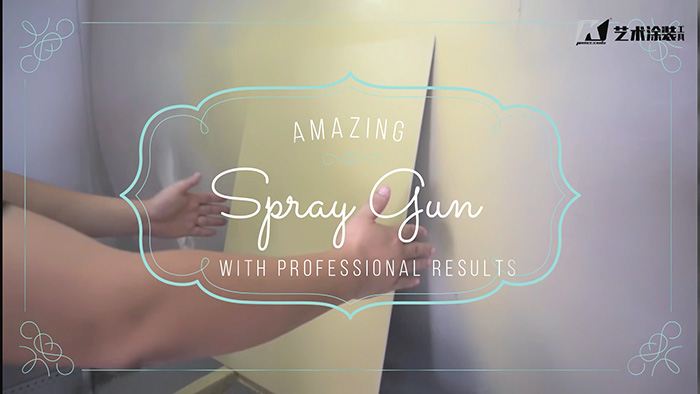
The Finish
DIY homeowners love the HVLP Sprayer because they are applicable to nearly every type of housework. Or, if you are a commercial painting professional you’ll find it hard to use any of your other equipment and tools due to the ease and precision you achieve when using your sprayer. Your will spend less time on projects and you’ll spend less money on paint.
You’ve got a paint/finishing project to do and not only is there a lot of it to cover, you also want a smooth, even coating. Let’s be honest, doing it with a brush will take time and probably not leave the best of finishes. Now it’s time to consider using a HVLP spray gun.
With the lower velocity of HVLP, this produces a softer, easier to control spray. This means that much more of the finish ends up on the surface, with figures as high as 85% efficiency for some systems. With some finishing substances being harmful to your health and the environment, HVLP is more and more becoming the industry standard.
HVLP – the future of spraying
This may be the deciding factor in your purchase if your project has to be absolutely perfect, which could make you lean towards the compressor. But don’t think that the lower pressure of the HVLP will mean a bad finish, in fact the quality of finish of these systems can be identical to the best high pressure spray finishes.
Fast becoming the industry standard in many sectors and with more emphasis on the environment, it’s hard to see it not becoming the only way to spray in the future. If you already own a quality compressor, it may not seem like it’s worth it right now. But if you need lots of jobs doing and the cost of paint is getting too much, these will prove to be a sound investment.
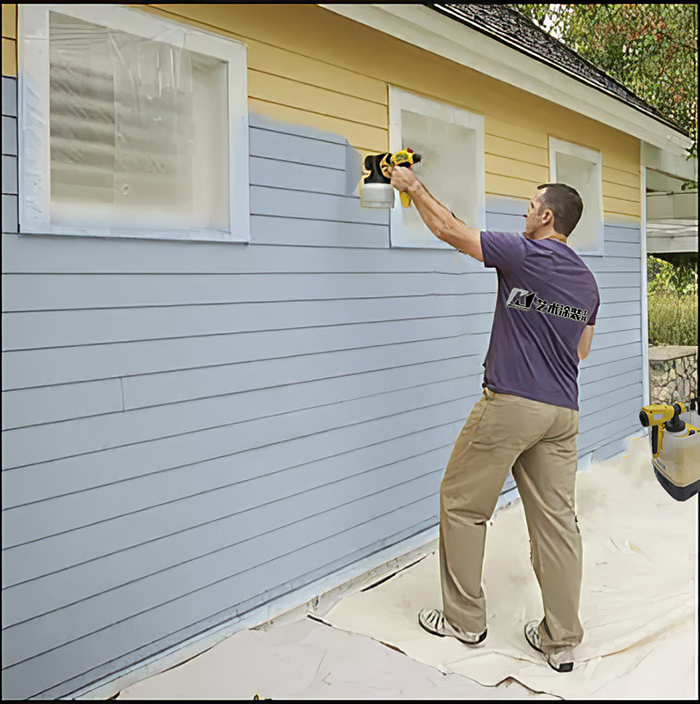
Top Tips: HOW TO START UP A PAINT SPRAYER
PRESSURE RELIEF
Proper setup of your sprayer is an important step to keep it running at maximum performance and efficiency. Before operating your sprayer for the first time, or any time, always perform the pressure relief procedure to ensure your sprayer is de-pressurized.
Engage the gun trigger lock.
Turn the on/off switch to OFF.
Turn the pressure control to the lowest setting.
Reverse the tip and disengage the gun trigger lock.
Hold a metal part of the gun firmly to a grounded metal pail and trigger the gun to relieve pressure.
Engage the trigger lock.
Turn the prime valve to the PRIME, or DRAIN, position.
PRIME THE PUMP
With the pressure relief procedure complete, it is time to prime the pump.
Engage the trigger lock.
Remove the tip and guard from your gun.
Place the fluid intake hose into a paint pail and place the drain tube into a waste pail.
Be sure the prime valve is in the PRIME, or DRAIN, position.
Turn the pressure control to the lowest pressure setting.
Turn the on/off switch to ON.
Increase the pressure control until the motor starts. Allow paint to circulate through the sprayer until paint flows smoothly out the drain tube.
Turn the on/off switch to OFF.
PRIME THE HOSE AND GUN
You have now primed your pump with fluid. Next, it is time to prime the hose and gun to be ready to spray.
Hold the gun against a grounded metal waste pail, disengage the trigger lock, pull the gun trigger and hold.
Then, turn the prime valve to the SPRAY position.
Turn the on/off switch to ON.
Let the pump run until you see paint come out of the gun. Then, turn the on/off switch to OFF and release the gun trigger.
Move the gun to the paint pail, pull the gun trigger, turn the on/off switch to ON and let the pump run for about 20 seconds.
Then, release the trigger and allow the sprayer to build pressure.
Engage the trigger lock.
Screw the tip assembly onto the gun and tighten.
TEST YOUR SPRAY PATTERN
It is recommended to use a test surface and test your spray pattern. Test patterns should be sprayed on scraps of cardboard or other waste material. To test the spray pattern, follow these steps…
Turn the pressure control knob to a mid-way position.
While holding the gun 12 inches from the test surface, disengage the trigger lock and spray a test pattern.
If the pattern has heavy edges, often called tails, slowly increase pressure and continue to spray test patterns until the hard edges are replaced with a soft, blend-able spray pattern.
After following these steps, you’re now ready to spray. When spraying, be sure to follow these start up steps, as well as our safety recommendations, best practice spray techniques, and cleaning steps.















